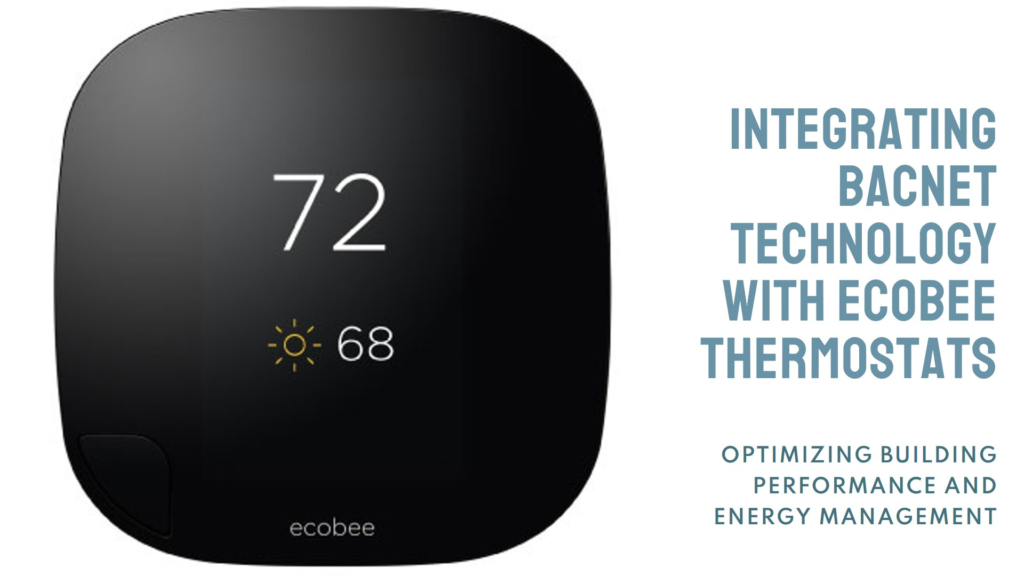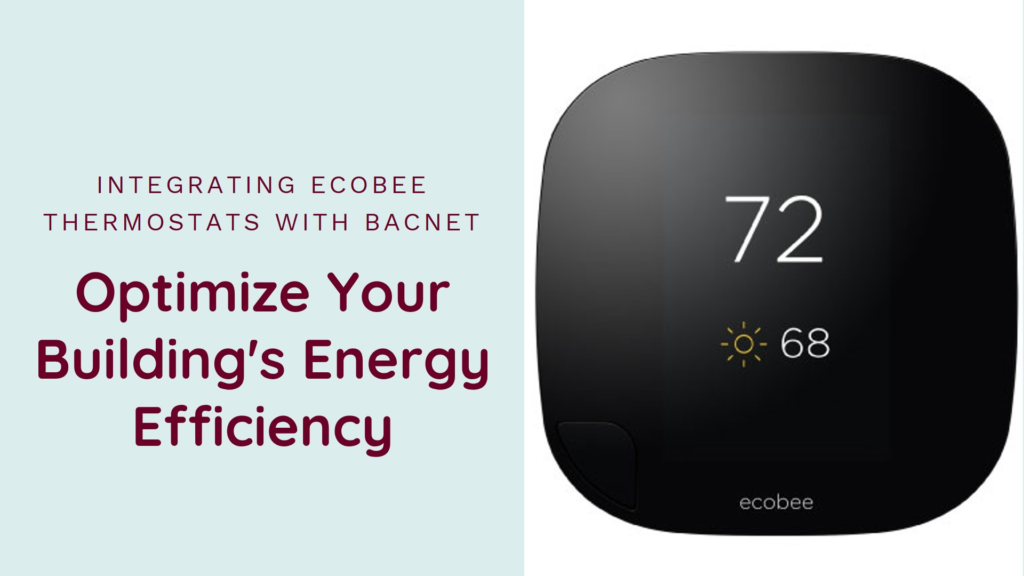Overview
Let’s explore integrating S4’s BACnet technology with ecobee thermostats, offering a comprehensive solution for building automation. This integration enhances building performance, optimizes energy management, and ensures sustainability, making it ideal for various applications.
Key Features and Architecture
Ecobee Native Features:
- Architecturally appealing design and user-friendly interface.
- Advanced optimization algorithms and services.
- Compatibility with multiple models and remote sensors.
- Data synchronization to the ecobee cloud, supporting Alexa and other Smart Home integrations.
- Consumer and SmartBuildings commercial portals with a public API for enhanced functionality.
Integration Architecture:
- Secure connection to ecobee SmartBuildings accounts via Ethernet TCP/IP.
- Bi-directional access to thermostat data using public API.
- Automatic discovery and configuration of thermostats.
- Hosted on a dedicated industrial computer with a commissioning wizard for installation and setup.
- S4 Device Templates for easy and customizable configuration.

BACnet Integration Details
Standardization:
- Thermostats are published as standard BACnet IP Annex J objects.
- Full integration with the 16-level BACnet Priority Array.
- Supports persistent BACnet priority array entries for Demand-Response, continuous commissioning, and energy management applications.
Benefits:
- Seamless integration with all BACnet clients, including operator workstations, global controllers, and value-added applications.
- Continuous data synchronization between BACnet and ecobee SmartBuildings service.
- Full building optimization, enabling enhanced energy management, analytics, fault detection and diagnostics (FDD), and continuous commissioning.
- Support for all BACnet clients and value-added applications from any manufacturer following the BACnet standard.
Use Cases and Requirements
Use Cases:
- Buildings with existing BACnet BAS and ecobee thermostats benefit from single-seat management and full building optimization.
- Buildings looking to upgrade to WiFi thermostats can integrate new ecobee thermostats into their BACnet environment.
Requirements:
- Ecobee thermostats are compatible with the building’s mechanical systems.
- Subscriptions to ecobee SmartBuildings service and S4 BACnet ecobee Integration.
- Ecobee SmartBuildings credentials (Client ID and Secret Code).
- TCP/IP access to the ecobee SmartBuildings cloud service.
Next Steps and Results
Next Steps:
- Select, purchase, and install ecobee thermostats and remote sensors suitable for the mechanical systems.
- Contact ecobee representatives and S4 Integration Solutions for guidance and purchases.
- Purchase the S4 BACnet ecobee Integration and value-added applications from authorized distributors.
Results:
- Optimized individual spaces with ecobee thermostats and services.
- Complete building optimization and efficiency improvements.
- Increased property value and potential rebates for efficiency improvements.
- Enhanced occupant comfort and productivity, contributing to business profitability.
Insights for Facilities Managers
Practical Applications and Benefits:
- Enhanced Efficiency and Optimization: Integrating ecobee thermostats with BACnet enables us to optimize entire buildings, leading to significant energy savings and operational efficiency.
- Advanced Data Utilization: The integration allows for advanced analytics, fault detection, and continuous commissioning, enabling us to make data-driven decisions for maintenance and energy management.
- Future-Proofing Facilities: By adopting these advanced integration technologies, we can future-proof our facilities, ensuring compatibility with upcoming systems and standards.
- Skill Development: Understanding and implementing these integrations will enhance our technical skills, making us more valuable in the facility management industry.
- Sustainability and Cost Savings: Optimized energy management and efficiency improvements align with sustainability goals, potentially leading to cost savings and rebates, which can be reinvested in further improvements.
Implementation Strategy:
- Assessment and Planning: Evaluate our current building systems and identify areas where ecobee thermostats and BACnet integration can be beneficial. Develop a detailed implementation plan, including necessary upgrades and configurations.
- Training and Collaboration: Ensure our team is trained on the new systems and understand the benefits and functionalities. Collaborate with IT, engineering, and management teams to ensure smooth integration and operation.
- Continuous Monitoring and Improvement: Regularly monitor the performance of the integrated systems and make necessary adjustments to optimize efficiency. Stay updated with new developments and updates from S4 and ecobee to continuously improve our building management practices.
By leveraging the S4 BACnet ecobee Integration, we can significantly enhance our facility management capabilities, improving efficiency, cost savings, and occupant satisfaction. This aligns with our goals of continuous learning, knowledge sharing, and achieving customer satisfaction.



